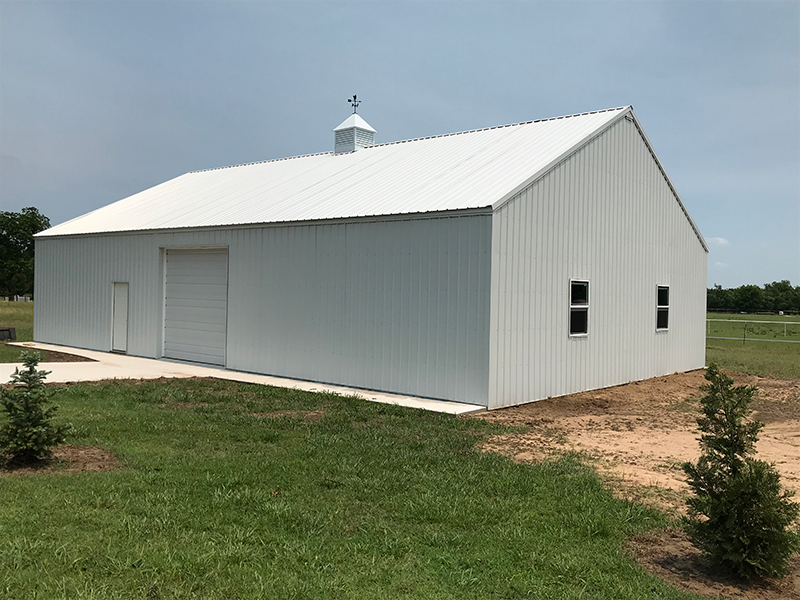When building a pole barn in Oklahoma, insulation is one of the most important decisions you’ll make, especially if you plan to use the space year-round. Whether you’re building a storage barn, workshop, or barndominium, choosing the right insulation can impact everything from comfort to energy efficiency. But with so many options available, how do you know what works and what’s overkill?
At D Cross Barn Co., we specialize in building custom pole barns that are not only durable but comfortable year-round. Here’s a breakdown of the best insulation options for your pole barn and what to consider for your specific needs.
1. Spray Foam Insulation: The Premium Option
If you’re looking for the best insulation option, spray foam is a top choice. It seals every crack and crevice, providing superior thermal resistance and moisture control. This is perfect if you plan to use your pole barn as a year-round workshop or living space, as it helps maintain a consistent temperature and prevent mold growth. However, it’s also one of the more expensive options. It’s not necessary for simple storage barns, but it’s ideal for barns you’ll be using regularly or want to keep conditioned.
2. Fiberglass Batt Insulation: Affordable and Effective
Fiberglass batt insulation is one of the most cost-effective choices for pole barns. It’s easy to install and works well for areas that don’t require extreme temperature control. If you’re building a barn for storing equipment or livestock, fiberglass is a solid option. It offers good thermal resistance but isn’t as effective at blocking moisture or air leaks as spray foam. If budget is a concern but you still want decent insulation, fiberglass is a great compromise.
3. Reflective Foil Insulation: The Budget-Friendly Alternative
For barns in warmer climates or those where temperature control isn’t a high priority, reflective foil insulation can work wonders. It’s an affordable option that reflects heat away during the summer, keeping the interior cooler. While it doesn’t provide as much thermal resistance as foam or fiberglass, it’s perfect for barns that don’t need to be insulated for winter use, like equipment storage or simple workshops.
What’s Overkill?
While it may seem tempting to go all-in with expensive, high-end insulation for every pole barn, it’s important to match the insulation to the barn’s intended use. Spray foam insulation is ideal for spaces that require constant climate control, but if you’re building a basic storage barn, it’s probably overkill. Similarly, investing in high R-value fiberglass or foam when you’re not planning to heat or cool the barn can drive costs up unnecessarily.
Final Thoughts: Choose What Fits Your Needs
Choosing the right insulation for your pole barn ultimately depends on how you plan to use the space and your climate needs. At D Cross Barn Co., we help you design the perfect pole barn with insulation options that fit your needs and your budget.
Ready to Build Your Insulated Pole Barn?
Call us today at 918-629-0505 to discuss the best insulation solutions for your project.

